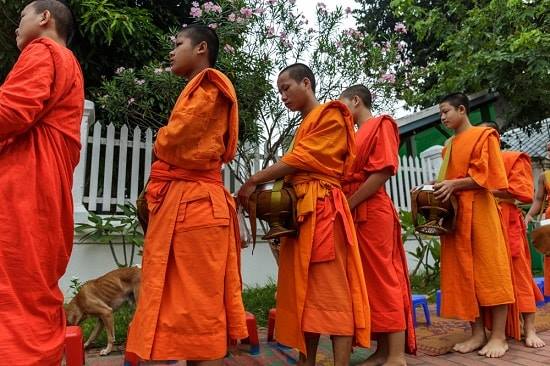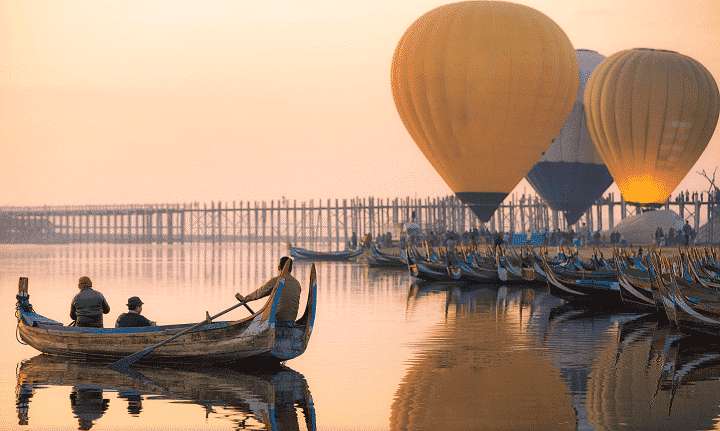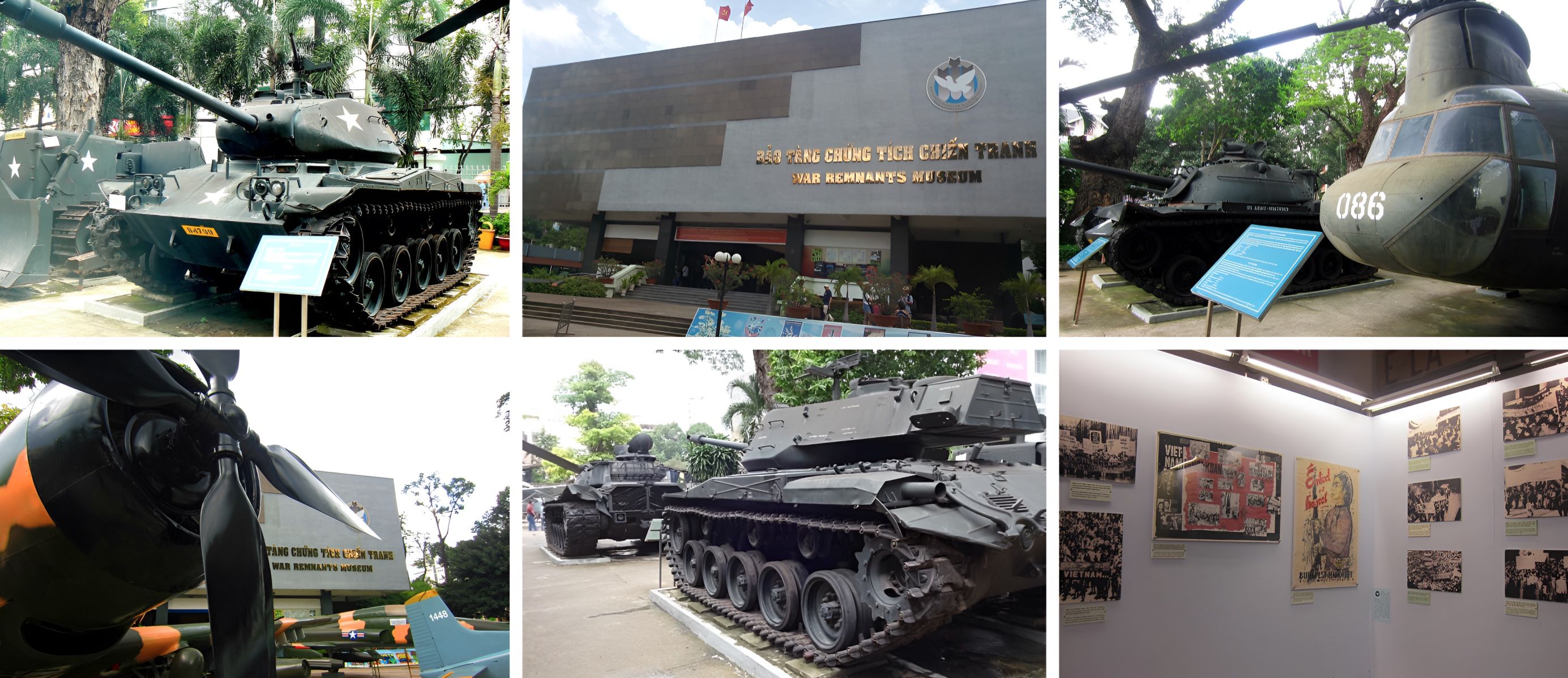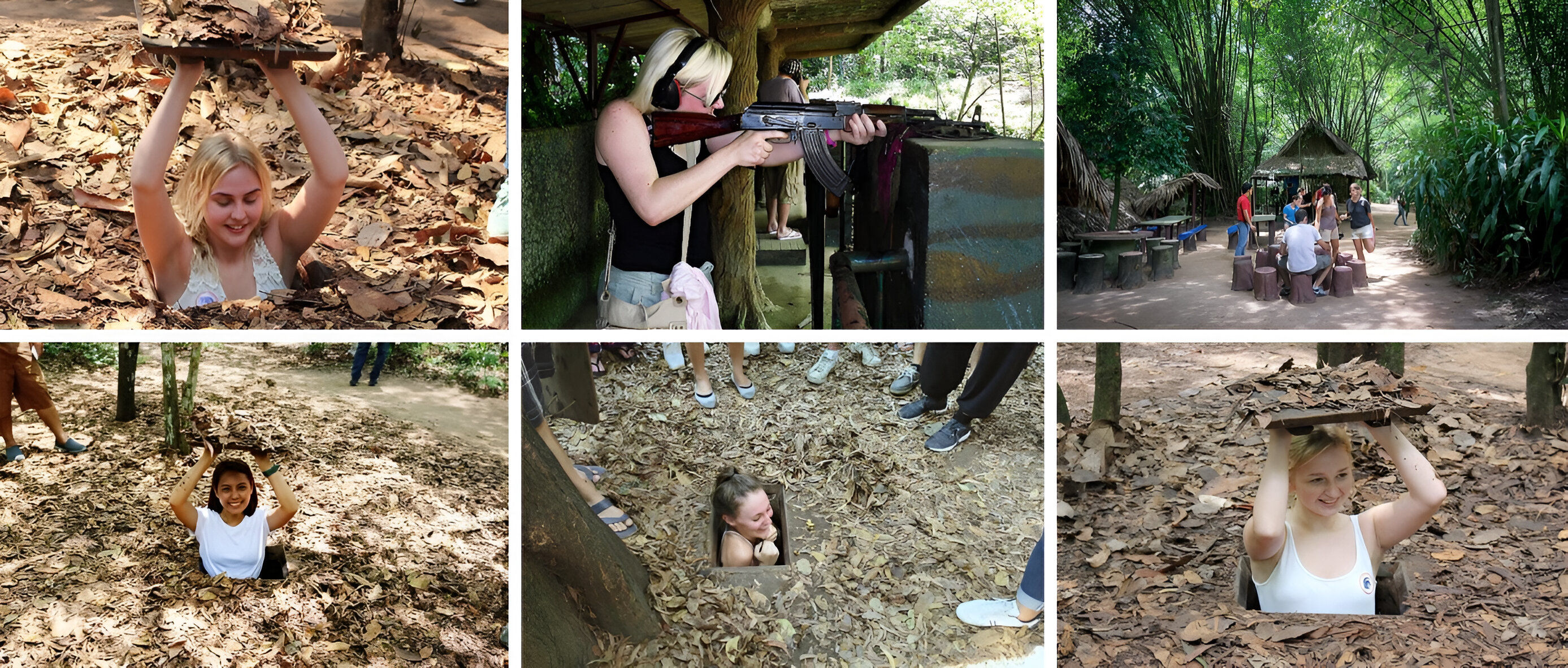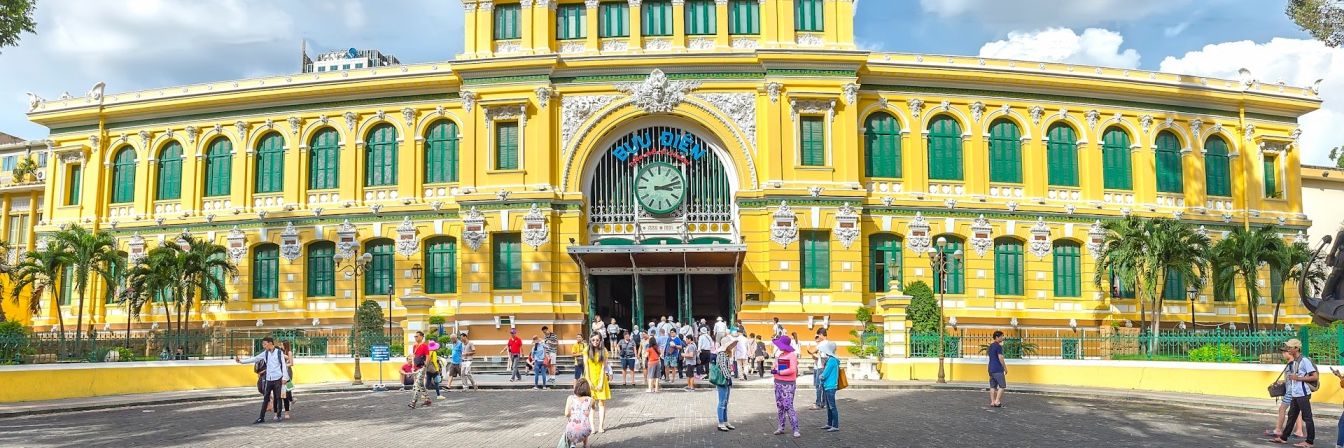HO CHI MINH CITY: BEST THINGS TO DO & TRAVEL GUIDE
Ho Chi Minh City , still commonly known as Saigon, is the heart and soul of Vietnam. It’s a bustling, dynamic and industrious centre, the largest city (9.5 million), the business capital and the cultural trendsetter. Things to do in Ho Chi Minh City are the streets, where much of the city’s life takes place, is a myriad of shops, stalls, stands-on-wheels and vendors selling wares spread out on sidewalks.
The city churns, ferments, bubbles and fumes. Yet within the teeming metropolis are the timeless traditions & beauty of centuries old culture. Sights include the Giac Lam Pagoda, the neo-Romanesque Notre Dame Cathedral, Reunification Hall, Cholon market and the former War remnants museum, scene of such havoc during the 1975 evacuations.
And, that’s not all, we back you up for an updated Things to do and best travel guide in Ho Chi Minh City. Check out best Vietnam tours 2025
Top Reasons Why You Should Visit Ho Chi Minh City?
Learn about Vietnam War through the War Museums & the jungle covered tunnels at Cu Chi
Explore the Saigon Cuisine: A Journey through South-Vietnamese Delicacies
Perfect starting point to the beaches in South Vietnam
Gateway to the mighty Mekong River – the world of waterways
Experience chaotic yet charming life on back of motorcycle
Energetic nightlife, get to know the vibrant after-hours activities by locals
Best Things to do in Ho Chi Minh City
Fasten your seatbelts as Ho Chi Minh City is a metropolis on the move – and we’re not just talking about the motorbikes that throng the streets. Saigon is home to French colonial architecture, host some of the best pagodas in Vietnam at its most dizzying is a place of culture that has driven the whole Vietnam forward with its limitless energy.
War Remnant Museum | Address: 28 Ð Vo Van Tan
The War Remnants Museum consistently attracts Western tourists as one of the best museums in whole Vietnam. Although many atrocities documented here received widespread publicity, Westerners rarely hear the victims of US military action tell their own stories.
Once known as the museum of Chinese & American war crimes. The displays present a one-sided view, many of the most disturbing photographs illustrating US atrocities come from US sources, including those of the infamous My Lai Massacre.
Outside, visitors can see US armored vehicles, artillery pieces, bombs, and infantry weapons. One corner of the grounds features the notorious French and South Vietnamese prisons on Phu Quoc and Con Son Islands. Artifacts include the iconic French guillotine and the notoriously inhumane ‘tiger cages’ used to house Viet Cong prisoners. The ground floor showcases a collection of posters and photographs supporting the international antiwar movement, providing a counterbalance to the horrors presented upstairs.
Visitors will also have the rare opportunity to see some experimental weapons used in the war, once military secrets, such as the flechette—an artillery shell filled with thousands of tiny darts.
The War Remnants Museum occupies the former American Information Service center. The items appear in both English and Vietnamese.
Cu Chi Tunnels
The Cu Chi tunnel network became legendary during the 1960s for its role in facilitating Viet Cong (VC) control of a large rural area just 50 kilometers from Ho Chi Minh City. At its peak, the tunnel system stretched from the South Vietnamese capital to the Cambodian border, with over 250 kilometers of tunnels in the Cu Chi district alone. The network, which featured several layers deep in places, included countless trap doors, living areas, storage facilities, weapons factories, field hospitals, command centers, and kitchens.
If you’re exploring things to do in Ho Chi Minh City, visiting the Cu Chi Tunnels, located within an hour ride – offers a unique glimpse into Vietnam’s war history and the ingenuity of the Viet Cong.
French colonial sites
Saigon’s partly converted to a city with colonial architecture by the arrival of French in the mid 18th century. The appearance of colonial architecture and buildings you see today surprises visitors.
The old Saigon Central Post Office is one of them. Across from this building stands the impressive Saigon Notre Dame Cathedral, dating from 1863.
The Saigon Opera House, another French colonial-era building, is also still in use. Attending a show here offers a unique experience. Nearby, you will find the Ho Chi Minh City People’s Committee, which was once the town hall.
Notre Dame Cathedral | Address: Dong Khoi Area
Built between 1877 and 1883, Notre Dame Cathedral is set in the heart of HCMC’s government quarter. The cathedral faces Ð Dong Khoi. It is neo-Romanesque with two 40m-high square towers tipped with iron spires, which dominate the city’s skyline. In front of the cathedral (in the centre of the square bounded by the main post office) is a statue of the Virgin Mary. If the front gates are locked, try the door on the side of the building that faces Reunification Palace.
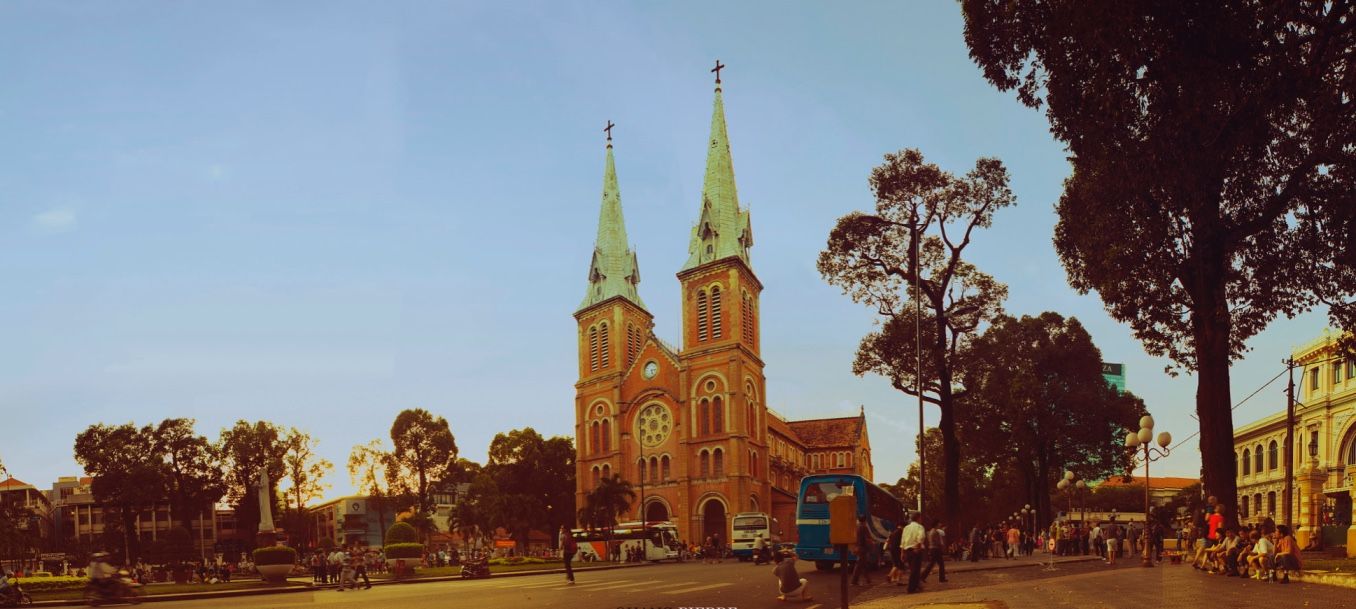
Motorbike Food Adventure & Amazing Night Market Tour
Street foods are part of the daily life in Vietnam and Ho Chi Minh City isn’t an exception. There are countless places offer foodie tour, however, the local way says something different. The street foods you eat in Saigon are represents the dishes from all the corners of the country and the best way to experience this unique culture encounter would be to go local and join a “Saigon Street food tour on back of a motorbike” together with a visit to some of the night-markets held every evening in the city.
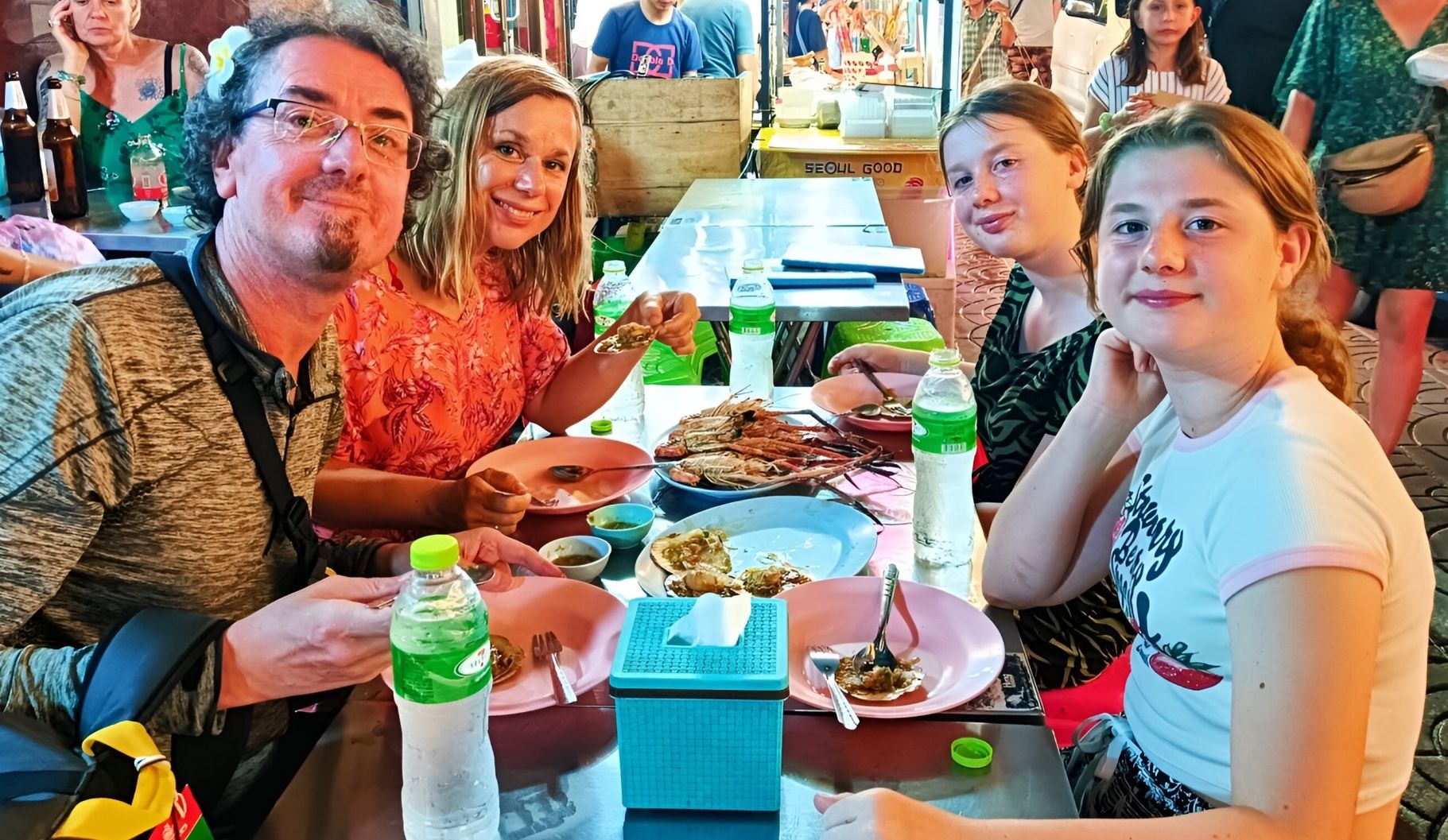
Reunification Palace | Address: 106 Ð Nguyen Du
This is one of the most fascinating sights in HCMC, thanks to its striking modern architecture and the eerie feeling you get as you walk through the deserted halls. Saigon Reunification palace remains almost unchanged since the last day of the Republic of Vietnam in 1975.
Locally known as Thong Nhat & initially built for the French governor in late 18th century. The Reunification palace is definitely worth a visit since it is ranked as one of the first 10 special national monuments of Vietnam.
On the morning of 30 April 1975 the Northern forces who were crashing through the wrought iron gates ended the war. ‘There is no question of you transferring power,’ they were told by a Viet Cong officer. ‘You cannot give up what you do not have.’
The building took its current form in 1966 after it had been partially destroyed in an attack by South Vietnam leader Diem’s own air force. The palace is now transformed to a museum with magnificent example of 60s architecture – airy and open, with spacious chambers & modern decorations. The most interesting section of the Reunification Palace is the basement – a network of tunnels and rooms, including a war room and a telecommunications base.
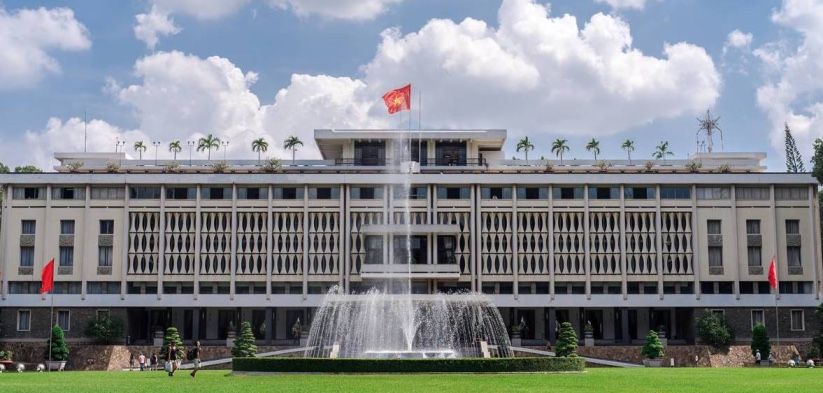
Saigon Nightlife – Where the city come alive after dark
Ho Chi Minh City is arguably where the best party & nightlife is happening. This bustling metropolis pulses with energy, offering a kaleidoscope of bars, rooftop clubs, and restaurants to suit all the mood. You can find sophisticated cocktail bars to live music, beer bars, and trendy rooftop bars in all around the city.
In addition, the most famous park & nightlife place in Ho Chi Minh City is the backpacker center in district 1 – Bui Vien is where all parties and beer bars are located – check it out and spend a time for fun.
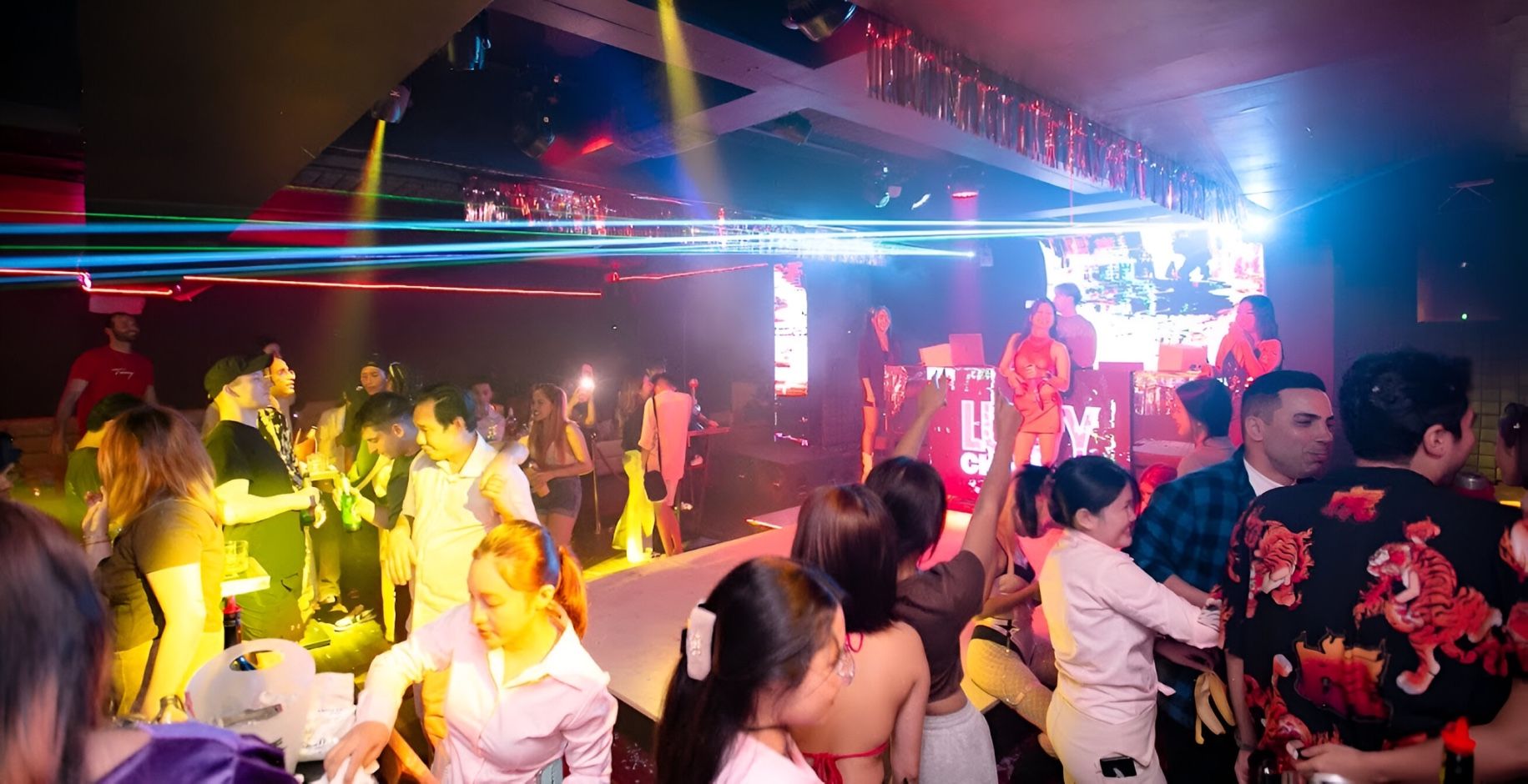
Bitexco Financial Tower | 2 Đ. Hải Triều
Once the tallest in the Ho Chi Minh City till the landmark 81 was erected in 2018. This 68-story, 262m-high, Saigon Bitexco Tower was designed by Carlos Zapata, shaped like a lotus flower dominates the center of city. Some of the unique features of the Bitexco including the helipad on its roof and the Skydeck on the 48th floor.
The Bitexco Financial Tower’s construction started in early 2007 in a floor area of 114,000 SQ meter.
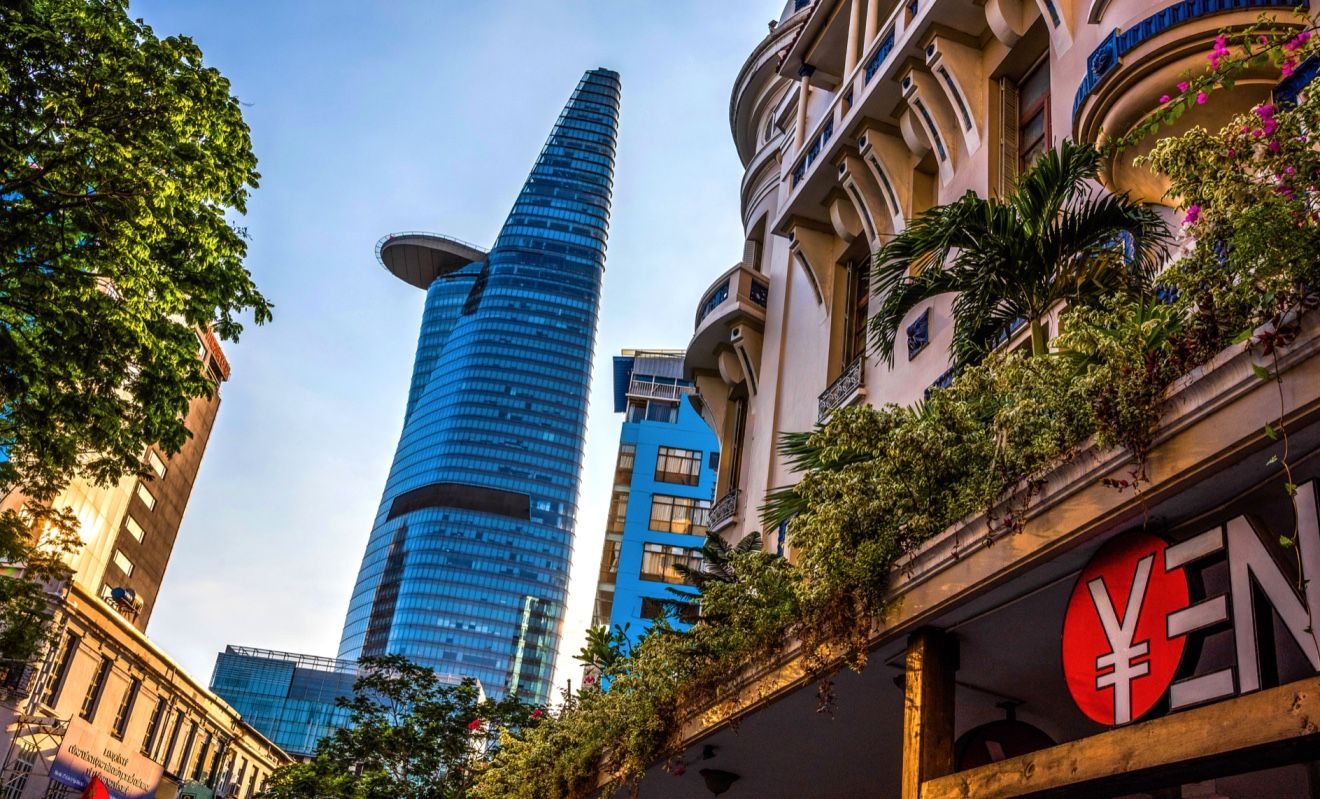
Nguyen Hue Walking Street
Ho Chi Minh City’s walking street is located in the Nguyen Hue, where all the evening gathering and socializing happen. The walking street is within 10 minutes walk from the backpacker center, the Bui Vien Street, so usually visitors walk the distance between the two direction.
Walk the street, enjoy the local vibe, chat with students and or enjoy the view from one of the many cafes in the walking street. In addition, the area is surrounded by skyscrapers and luxury hotels, the city’s opera house as well as the most noticeable one, the building of Ho Chi Minh City’s people committee.
People’s Committee Building | 86 Đ. Lê Thánh Tôn
Not just a famous sight or attraction, but a great landmark located in the end of the Nguyen Hue walking street. HCMC’s former gingerbread Hôtel de Ville, one of the city’s most prominent landmarks, is now somewhat incongruously the home of the Ho Chi Minh City People’s Committee.
Built between 1901 and 1908, the building is situated at the northwestern end of Nguyen Hue walking street, facing the river. The former hotel is notable for its gardens, ornate façade and elegant interior lit with crystal chandeliers. It’s easily the most photographed building in Vietnam.
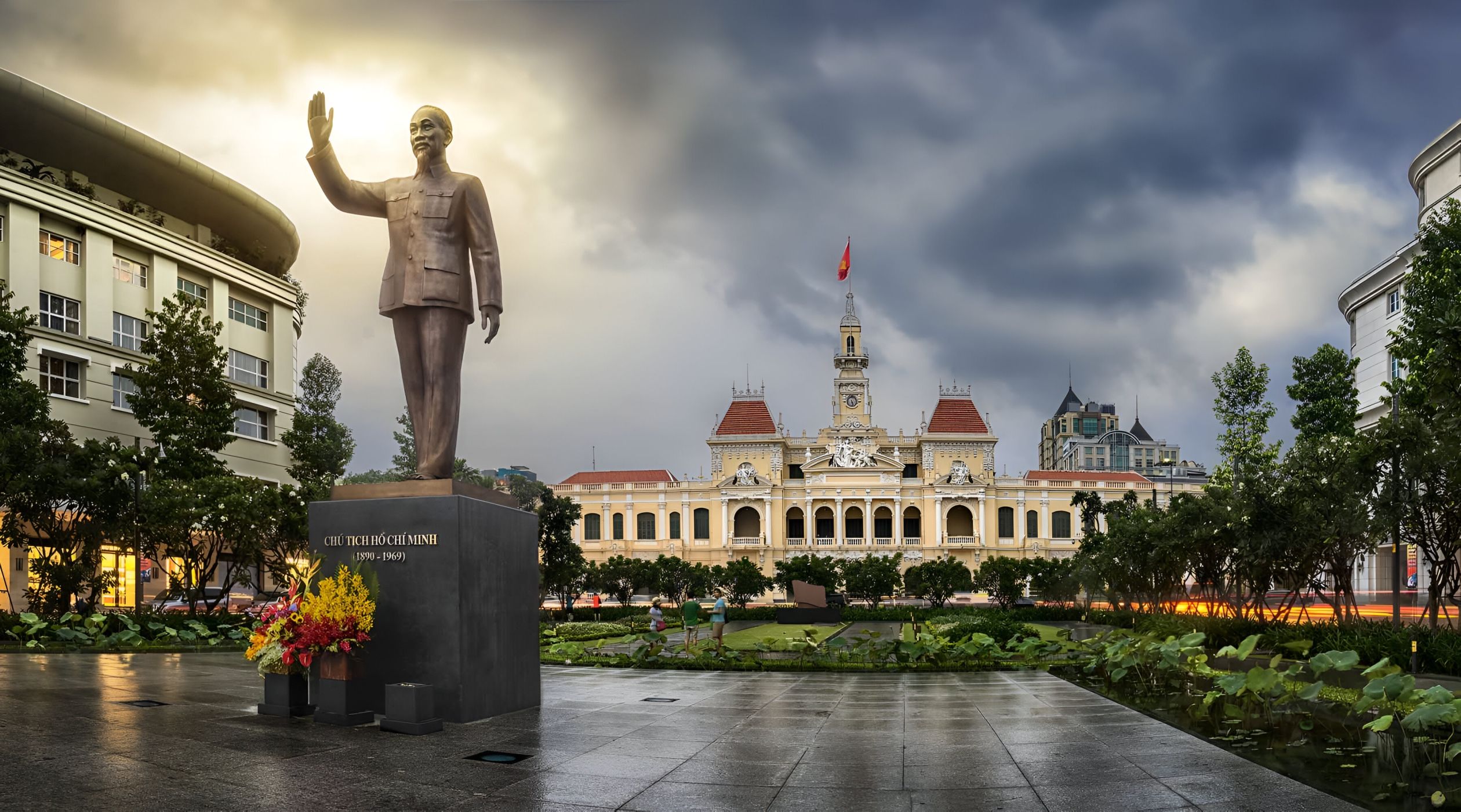
Ben Thanh Market
If shopping is in the list of things to do in Ho Chi Minh City, then, the most central of all, teeming Ben Thanh Market and its surrounding streets comprise one of the city’s liveliest areas. Everything that’s commonly eaten, worn or used by the Saigonese is piled high: vegetables, dried fruit, meats, spices, scorpions in alcohol, sweets, tobacco, clothing, one-day suits, wristwatches, blingtastic jewellery, hardware and more spill forth from a profusion of stalls.
Souvenir items can be found in equal abundance. Vendors are determined and prices usually higher than elsewhere, so bargain vigorously (although some stalls have ‘Fixed Price’ signs).
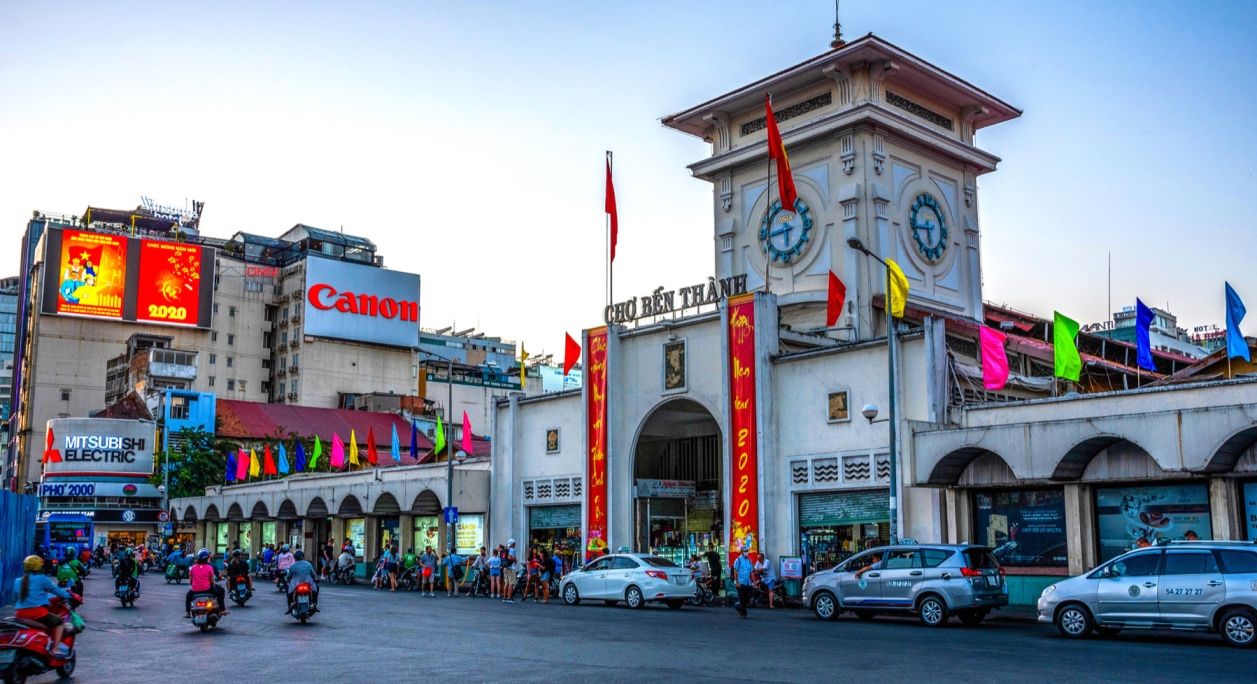
Jade Emperor Pagoda | Address: 73 Ð Mai Thi Luu
Chùa Ngọc Hoàng as in Vietnamese – Built in 1909 by the Cantonese (Quang Dong) Congregation, the Jade Emperor Pagoda is truly a gem among Chinese temples and its one of the must-see tourist sights in Ho Chi Minh City . It is one of the most spectacularly colourful pagodas as well, filled with statues of phantasmal divinities and grotesque heroes. The pungent smoke of burning joss sticks fills the air, obscuring the exquisite woodcarvings decorated with gilded Chinese characters.
The roof is covered with elaborate tile work. The statues, which represent characters from both the Buddhist and Taoist traditions, are made of reinforced papier-mâché. The pagoda is dedicated to the Emperor of Jade, the supreme Taoist god.
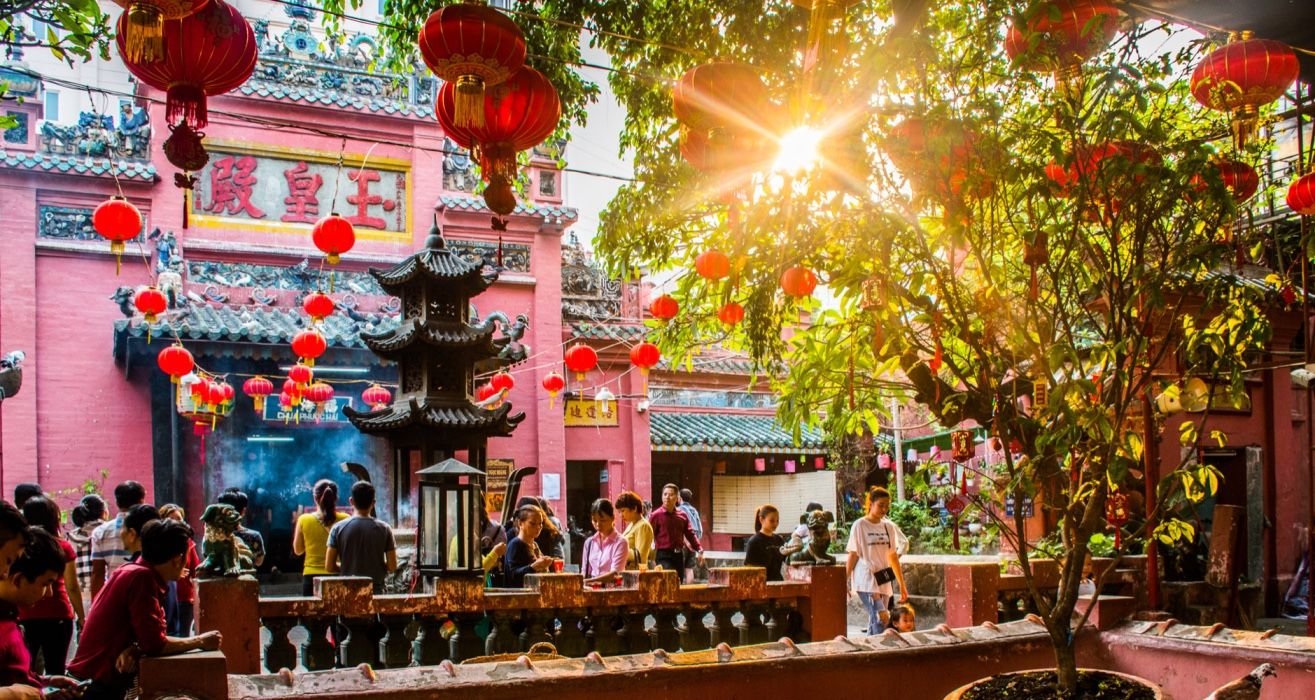
Saigon River
Probably the liveliest thing you see in Ho Chi Minh City that witnessed all the events has happened in the city. The Saigon River flows from Can Gio, southern region and stretched about 260km flowing through the Ho Chi Minh city.
If you’re visiting Mekong Delta, it is possible to opt for speedboat tat departs from Saigon River. Another option includes Saigon River dinner cruise.
Giac Lam Pagoda | Address: 118 Ð Lac Long Quan
Believed to be the oldest pagoda in Saigon, Giac Lam Pagoda dates from 1744. It’s a fantastically atmospheric place full of gilded statues, colourful wall panels with one of the country’s most impressive stupas (which is 32m tall).
A minor pilgrimage sight, as it contains a bronze bell that when rung is believed to answer the prayers posted by petitioners. Home to several monks, the Buddhist pagoda also incorporates aspects of religion in Vietnam. It is well worth the visit as its one of the city’s cultural relics.
Ornate tombs greet visitors at the entrance to the compound, as does a gleaming white statue of Quan The Am Bo Tat, the Goddess of Mercy. Inside, there are photographs and portraits of monks from the past and an impressive sanctuary with countless gilded figures. Prayers are held four times daily, and consist of a rare, traditional blend of chanting, bells, gongs and drums. The pagoda is north of Cholon in District 10, about 1km (0.6mi) northwest of Phu Tho Stadium.

Ho Chi Minh City Museum | Address: 1 Ð Nguyen Tat Thanh
Nicknamed the ‘Dragon House‘ (Nha Rong), The Ho Chi Minh museum it was built in 1863 in a neoclassical style which later named “Revolutionary Museum” – The impressive building is a place to learn about Ho Chi Minh City through the centuries, there are beautiful old city maps, displays of ceramics and archaeological artifacts and also there are a section related to marriage traditions of Vietnam’s 54 ethnic groups. Plan to visit the museum as part of the Saigon’s best things to do.
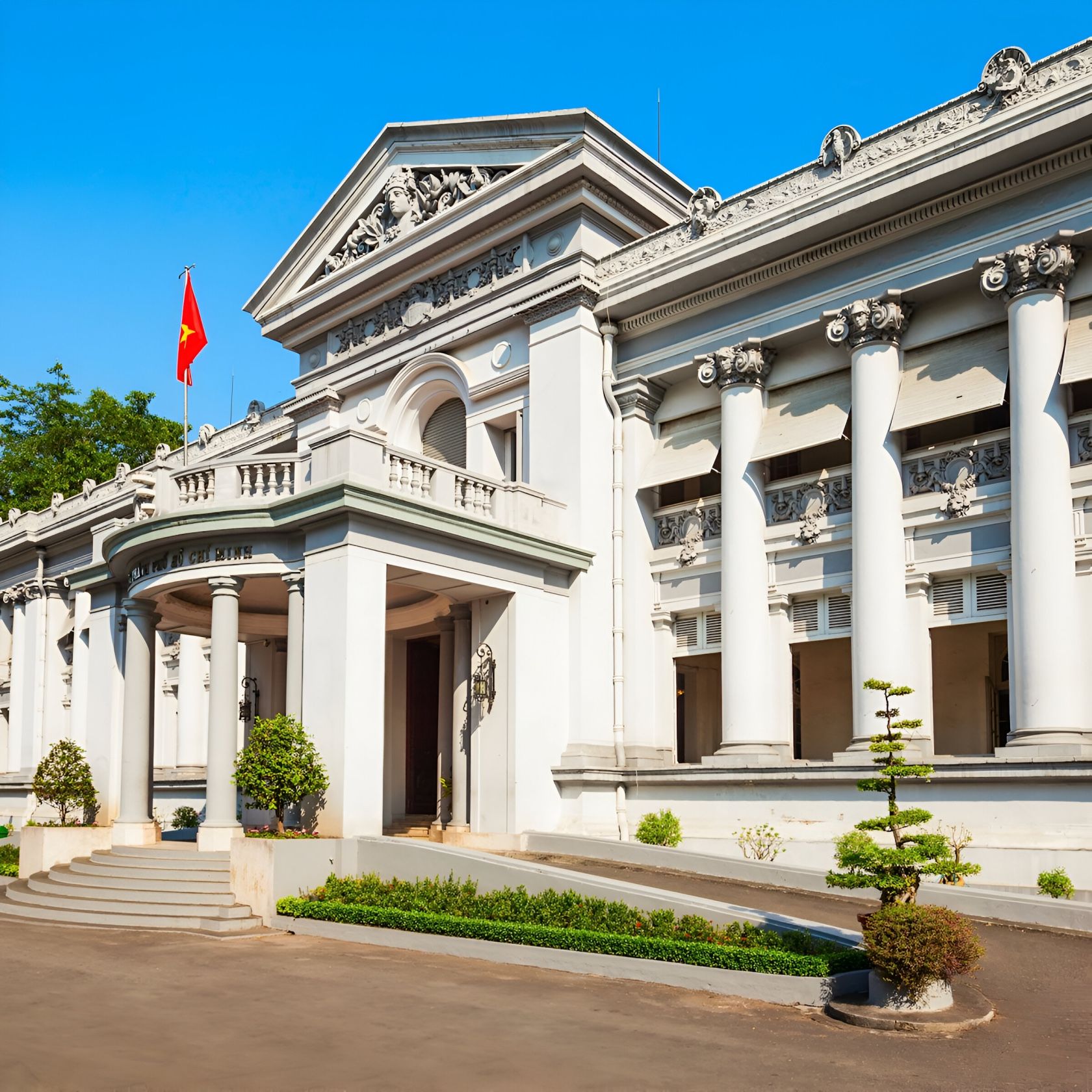
Ho Chi Minh City: FAQ & Travel Guide
Saigon is a name conjures up a thousand jumbled images, besides countless things to do in Ho Chi Minh City, skip the touristy things and wander through timeless alleys to ancient pagodas or teeming local markets, past ramshackle wooden shops selling silk, spices and baskets, before fast-forwarding modernity into the future beneath sleek skyscrapers or at designer malls, gourmet restaurants and unusual minimalist bars.
How Many Days Should You Spend in Ho Chi Minh City?
3-4 days is the answer, however, how Many Days to Spend in Ho Chi Minh City is greatly depends on your travel plan – The city’s home to great sights, things to do, and where all the untold story of Vietnam war begins. Generally, you could experience all the treasures in just a 3 days at minimum.
If you extend your stay to 4-5 days, you could head to experience Cu Chi, Mekong and probably Vung Tau for a beach fun. Make sure to check out → Vietnam 4 weeks travel itinerary
ATM’s & money exchange in Ho Chi Minh City
ATM’s are just around any corners and everywhere – to withdraw, the best banks are Vietcombank, BIDV, Techombank & VPBank – the ATM’s withdraw fees are vary from bank to bank, but usually around 30 – 50k VND.
The money exchanges are also available through the banks, but usually both local sand tourists refer to Ben Thanh Market for money exchange tat tends to have better rates than banks. Learn more about Vietnamese Currency VND to USD
Local festivals & events
Festivals & local events taking place in Ho Chi Minh City including Tet New Year which occurs the first day of the first lunar month. Nguyen Hue Flower Festival together with Dan Spring Flowers Festival, also during Tet. Southern fruit festival and also few others including events at local pagodas.
Best time to visit Saigon / Ho Chi Minh City
Basically, Ho Chi Minh City along with the southern Vietnam has two seasons: the wet (May to November, wettest from June to September) and the dry (December to April). The hottest and most humid time is from the end of February to May. Cheap out Weather in Ho Chi Minh City
February: with little or no rain, with the lowest humidity – this is the time city is celebrating the lunar new year.
March: Most of the days with clear sky, some rain during the late hours and almost no humidity.
December: Dry month for Ho Chi Minh City with temperature start to drop.
Ho Chi Minh City: Best hotels & hostels
Budget travellers tend to congregate around Pham Ngu Lao St & the backpacker street of Bui Vien. Mid-range upmarket hotels concentrated around Dong Khoi St at the eastern side of District one – Almost all the 5 star international hotels such as Rex, Park Hyatt, InterContinental, Renaissance, Le Meridien and few other along with a handful of 3-4 star hotels are all located within this area.
Regardless of the category of a hotel you’re looking for, we advice you to stay in District 1 from where you an access to most tourist sights and best things to do and also, if you’re booking a tour to Mekong & or Cu Chi, the pick up would be anywhere within the district 1 and Bui Vien.
Food & Drinking
If you travel for food, the Ho Chi Minh City is the food capital of Vietnam with no doubt. The local foods are something for everyone. Saigon food & drinking scenes offer best of all regional foods from north and Hanoi to center and Danang.
Everywhere you look while walking around Ho Chi Minh City, you’ll be tempted by something delicious – whether a famous Com tam, Beef noodle soup (Bun bo), Saigon sandwich (Banh mi) or a wide selection of seafood BBQ in the streets.
There are both local foods and fine dining with International cuisine.
Ho Chi Minh City: How to get there
Flights to Ho Chi Minh City
Tan Son Nhat International Airport in Ho Chi Minh City runs several daily flights to Hanoi, Danang, Nha Trang, Phu Quoc and other major cities in Vietnam. Vietnam Airline, the national career operate all the routes. Other airlines too.
In addition, International flights In & Out of Vietnam operates between Asia, Europe, USA and Australia. Daily flights to Bangkok, Jakarta, Kuala Lumpur and other routes are available to book from.
Buses to Ho Chi Minh City
There are an extensive bus services connect Ho Chi Minh City to Mekong, Dalat & Nha Trang, Muine, Hoi An, Danang and cities in central highlands. The cheapest option is to book the overnight buses and again, the pick up usually place in and around district 1. The 7 hours bus to Dalat costs around USD10 and to Nha Trang with USD15 for 9 hours ride. Book them in advance through your hotel and or any of those small travel agent in the city.
Also, there are regular, fast and affordable Limousine services (16 seat comfy mini-buses), with very comfortable seats, good service run between Ho Chi Minh City to cities in Mekong and Vung Tau.
Train to Ho Chi Minh City
Trains from Saigon train station in Nguyen Thong, District 3; serve coastal cities to the north of HCMC. Purchase tickets from Saigon Railways Tourist Services, to avoid any commission, or from most travel agents for a small fee.
There is a daily train travels to Danang – Also, the train from Saigon to Hanoi takes around 35 hours to cross the 1,740 Kilometers. There are 4 trains including SE2, SE4, SE6 and SE8 (which belong to Reunification Express train) on this route. They depart daily and take about 33 to 36 hours (From Saigon to Hanoi).
How to get around Saigon?
Walking, rent a private car, or book a tour, or just take a taxi. Most of the things to do & tourist sights are in the center of Ho Chi Minh City (District 1). Walking could be a great way to do both sightseeing and see around.
To arrange car or book a tour, check with almost every hotel, tourist agencies, or travel counter around the district 1. Remember, the rental also includes a driver because foreigners cannot drive in Vietnam without a Vietnamese driver’s license. If you book a tour, that includes a private car, guide and a driver with reasonable price.
Taxis are available 24 hours a day, Use Mai Linh, or Vinasun Taxi, or consider Grab (Works similar to Uber), Taxis with meters drive through the streets, with a price of around 12,000 VND for the first kilometer. Expect to pay approximately 25,000 VND (about $1) for a trip from Reunification palace to Pham Ngu Lao& backpacker street.
The Perfect 3-Day Ho Chi Minh City Itinerary
The Ho Chi Minh City’s experience is about so many things to do, the city offers locals and tourists an abundance of fascinating museums, historical sites, lively neighborhoods, fantastic restaurants, and more coffee shops and cocktail bars than you can count. A 3 days itinerary could well cover all the best things to do including tourist attractions & day trips.
Day 1: Explore Saigon city center
Start a 3-day itinerary in Ho Chi Minh City with a Vietnamese coffee at one of the city’s many cafés. Try Cà Phê Sữa đá, an iced coffee with condensed milk. Then, visit the Notre-Dame Cathedral, a stunning example of French colonial architecture built between 1877 and 1883, featuring imported red bricks and beautiful stained-glass windows.
Next, explore the Saigon Central Post Office, designed by Gustave Eiffel and built between 1886-1891. Afterward, head to Ben Nghe Street Food Market to sample must-try Vietnamese dishes, including the iconic noodle soup, Phở.
Sights to see in the afternoon of day 1
In the afternoon, he’d to visit the War Museum. This powerful museum offers deep insights into the impact of the American/Vietnamese war. The museum, housed in a large three-story building. Allocate at least two hours to explore it fully.
Afterwards, visit the nearby Independence Palace, the former residence of the President of South Vietnam. This museum documents life during the war and the dramatic moment in 1975 when a North Vietnamese tank breached its gates, signaling the war’s end.
Ho Chi Minh City: Things to do in the evening
In the evening, enjoy Nguyen Hue Street, HCMC’s most popular walking area. The grand French-colonial Ho Chi Minh City Hall provides a stunning backdrop, especially when illuminated at night, with the beloved statue of Ho Chi Minh in front.
On weekend nights, the 670-meter Nguyen Hue Street turns pedestrian-only, bustling with street food, souvenir stalls, vendors, and live music. Visit the Apartment Café Building, a nine-story tower with cafés, shops, boutiques, and speakeasy bars. During Tet (Lunar New Year), Nguyen Hue transforms into ‘Flower Street’ with vibrant, colorful flowers.
Day 2: Excursion to Cu Chi Tunnels
You can’t miss this day on a Ho Chi Minh City itinerary, explore the Cu Chi Tunnels, a vast network of underground passages used by the Viet Cong during the Vietnam War.
During a visit, take a guided English tour to learn about the soldiers’ weapons, traps, and tactics. You’ll even have the chance to crawl through some of the narrow tunnels. Be prepared for tight spaces; claustrophobia might be a challenge!
PM of day 2: Local food tour, beer and evening fun
The afternoon hours of the day 2 should be spend on local things to do – dive into a Bánh Mì crawl around the Bùng Binh Phù Đổng roundabout. Start at Bánh Mì Huynh Hoa for a generous baguette packed with cold cuts, perfect for sharing or saving for later. Then, visit Bánh Mì Hồng Hoa for a roast pork sandwich with crispy crackling. If you’re still hungry, head to Bánh Mì 37 for a tasty sandwich with juicy pork patties and a special sauce.
Next, explore the vibrant Bui Vien Street in District 1 for a taste of nightlife in Saigon. This bustling area offers cafés, bars, restaurants, street vendors, and clubs. Enjoy a locally brewed Bia hơi beer on a tiny stool or, for a more upscale experience, try Firkin Bar for expertly crafted cocktails and whiskey.
Mekong Delta in the morning of Day 3
Today, drive toward the Mekong. cruise on the mighty river. This area is known as the ‘Rice Basket of Vietnam’, the rich and fertile lands producing huge amounts of rice, coconuts, vegetables & tropical fruits. Paddle through the maze of palm-lined canals, getting a glimpse of daily life & enjoy a typical Mekong lunch.
After a busy few days in Ho Chi Minh City, spend the last afternoon & evening relaxing. Enjoy a café, buy souvenirs at Ben Thanh Market or head to Saigon River for a sunset cruise with dinner & live music.
Copyright 2013-2017 Vietnamese Private Tours Ltd With Vietnam Luxury Travel



